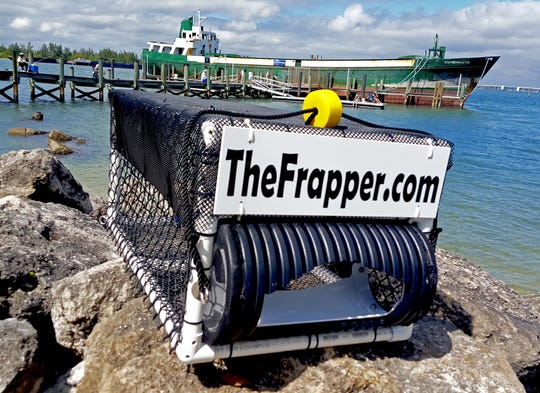The Port of Fort Pierce is abuzz with excitement and anticipation this week as a ship-sinking is taking shape for the Treasure Coast’s newest artificial reef. If all goes according to plan Sunday, the Voici Bernadette will slip below the waves and become fish and marine habitat while spending the rest of eternity on the sea floor. Colonization will begin rapidly, but not all critters will be welcome. Some will be lionfish.
More: Fort Pierce to get CCA artificial reef when Voici Bernadette is sunk
Bob and Maria Hickerson will take this opportunity to do a research project to unlock some of the mysteries of how lionfish behave on an artificial reef. The Vero Beach couple created lionfish removal devices such as The Frapper, a modified speargun tailored to killing the aquarium fish native to Indo-Pacific waters that have invaded Florida and the Caribbean.
“Once the ship is on the bottom,” Bob Hickerson said, “we’re going to try to predict where the least amount of current flow and where the eddies will be. Lionfish are ambush predators and energy conscious. They are basically lazy predators.”
Using four PVC and plastic mesh fish attraction devices (FADS) they also developed, the Hickersons will try to ascertain where lionfish prefer to stage. That could help them with technology they are working on to better control or eventually eradicate lionfish.
“We know lionfish sometimes will pick a corner and hunker down,” he said. “They will get against a ship’s interior wall or a ceiling and hunt smaller prey.”
More: Lionfish Safari removes 357 invasives
Hickerson said the FADs will be small cages with open ends placed on the ship. They will not be baited, so fish will enter and leave at will. When divers visit, they can record observations of whether or not they saw any lionfish inside, outside or nearby at all.
“We have observed them in laboratory settings and we know they are naturally attracted to structure,” Hickerson said. “This experiment is a first for the field.”
If lionfish are attracted to the FADs, that would be a valuable step in the development of the Hickersons’ technology. And one day, they hope, they can reduce the population enough to where lionfish no longer prey on other reef species.
Questions Hickerson’s project hopes to answer:
- How long will it take for lionfish to show up?
- Where on the vessel are they likely to gather?
- Where will there be eddies and current vortices?
- Will lionfish be attracted to the FADs?
- How many lionfish will show up on the reef?
To learn more about lionfish, go to MyFWC.com/fishing/saltwater/recreational/lionfish



